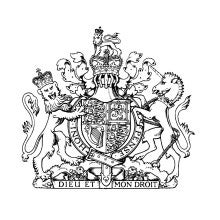We have been in the business of keeping people safe for over one hundred years
This timeline charts the development of the company from its first days as the Mines Rescue Service, there to respond to emergencies from the UK mining industry, to its position today as a leading authority in confined space and at height technical rescue.
-
1760
The UK’s first industrial revolution was largely fuelled by coal and rising demand saw many mines
opened. Sadly, as mine numbers grew, so did the frequency of explosions and fatalities.
-
1850 – 1900
7,500 people died from mine explosions alone.

-
1886
A Royal Commission recommended the formation of Mines Rescue Stations.

-
1902
The first Mines Rescue Station was built in Tankersley, Yorkshire, funded by the mine owners.

-
1911
The Coal Mines act made mines rescue stations compulsory. Now mines employing 100 or more men
must have a rescue station within 10 miles.
Many of the rescues at this time were due to fire and explosion which drove the introduction of new
technology, with mines rescue personnel requiring breathing apparatus.

-
1947
The industry was nationalised and the National Coal Board was formed.
But there was huge variation in mine safety and mines rescue provision, meaning improvement and
regulation was required.
-
1954
The Mines Quarries Act ensured emergency procedures were standardised along with the provision
of mines rescue.
-
1956
The Coal and other Mines (Fire and Rescue) Regulations, required the provision of one rescue station
per 15,000 employees.
At the peak there were 46 rescue stations in the UK dedicated to keeping over a million miners safe.
-
1980s
The rapid decline in mining prepared the industry for privatisation.

-
1995
The ownership of the Mines Rescue Service transferred to the new coal owners.
The same year, the Escape and Rescue from Mines Regulations shifted the emphasis on rescue, requiring mines to have a plan for self-escape and rescue response of 60 minutes from the site of
the mine, with rescue schemes requiring approval by the Secretary of State.

-
2014
The Mines Regulations required the new mine operators to have suitable arrangements in place for
escape and rescue. A code of practice gave guidance on how this might be achieved.
-
2016
The last deep coal mine at Kellingley, Yorkshire, closed.
Mines Rescue Service changed its name to MRS Training & Rescue and became an employee benefit
trust.

-
Today
We continue to operate the largest mines rescue business in the UK. Our centres provide health and
safety training and specialist rescue services for high-risk situations worldwide.
So you will always be safe in our hands.


Originally established at the turn of the 20th century to respond to emergencies from the UK mining industry, the first station was established at Tankersley in Yorkshire in 1902. Part of the National Coal Board, later British Coal Corporation until its privatisation in 1996, we attended many emergency calls to coal mines over the years, such as:-
1910 Pretoria -344 dead
1913 Senghenydd -439 dead
There were also some lessons learnt from emergencies in the 1950s, such as Cresswell, where it took over a year to recover all of the bodies which led to the introduction of miners being supplied with respiratory protective devices (self rescuers), and the Knockshinnoch disaster, which led to the precautions against in rush regulations.
Mines Rescue Service was set up, early 1996, by the newly privatised coal mining companies as a Company Limited by Guarantee with no shares, for the purpose of taking over the operations of the Mines Rescue Service previously undertaken by the British Coal Corporation.
With the continuous closure of underground mines during the intervening period, it became increasingly obvious that “change” was required to the governance arrangements. In April 2015, the HSE confirmed new Regulations for the “revocation of the Escape & Rescue from Mines Regulations 1995 in their entirety”, which included the National Mines Rescue Scheme, and thereby the statutory requirement for all coal mines to utilise MRS. The original objective and purpose for MRS was therefore removed.
In 2016, MRS changed its name to MRS Training & Rescue and became an Employee Benefit Trust.




